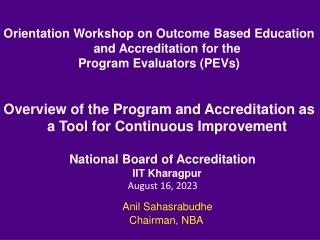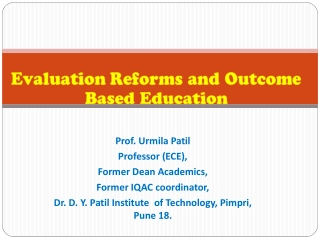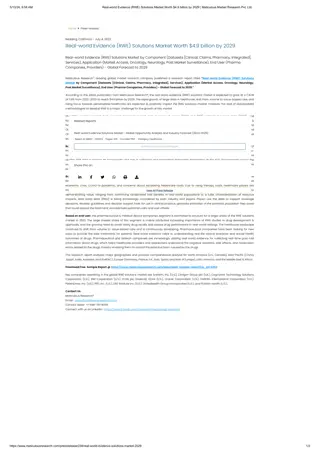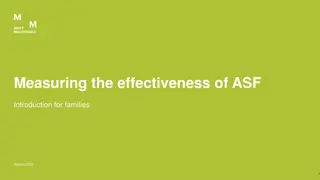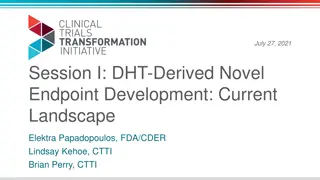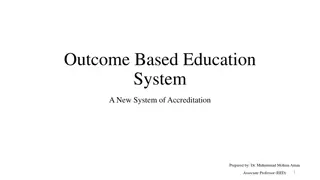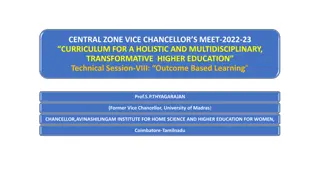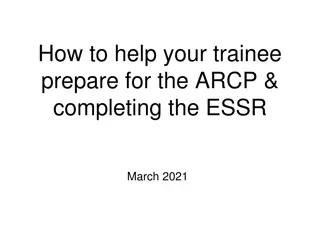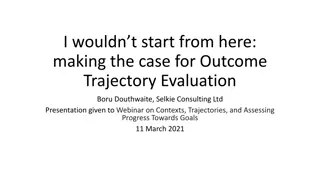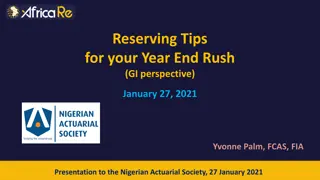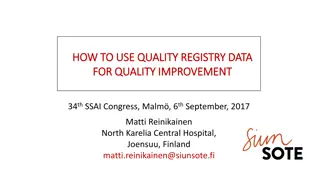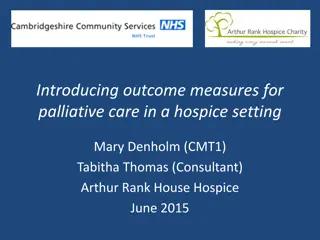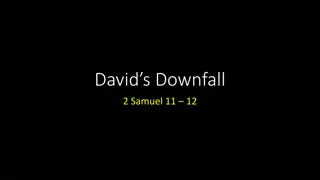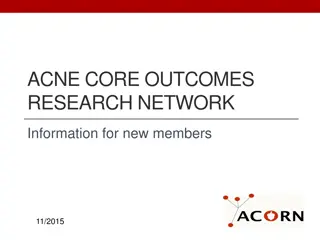Complacency as an Outcome of Success
Success can lead to complacency, posing risks at all levels of an organization. Managers may focus less on work details, workers may overlook workplace risks, and supervisors may shift focus. The consequences of complacency can be devastating, as seen in tragic industrial accidents like the BP Texas City Refinery explosion. The evolution of complacency is driven by consequences, influencing behaviors and decisions. It's crucial to avoid complacency by staying vigilant and not metaphorically reaching for the "cell phone" of distraction.
Download Presentation

Please find below an Image/Link to download the presentation.
The content on the website is provided AS IS for your information and personal use only. It may not be sold, licensed, or shared on other websites without obtaining consent from the author.If you encounter any issues during the download, it is possible that the publisher has removed the file from their server.
You are allowed to download the files provided on this website for personal or commercial use, subject to the condition that they are used lawfully. All files are the property of their respective owners.
The content on the website is provided AS IS for your information and personal use only. It may not be sold, licensed, or shared on other websites without obtaining consent from the author.
E N D
Presentation Transcript
COMPLACENCY COMPLACENCY CAN BE AN CAN BE AN OUTCOME OF OUTCOME OF SUCCESS SUCCESS 1
THE THREAT OF SUCCESS Success in avoiding accidents over a long period can lead to complacency. This can occur at all levels of an organization. Managers become less aware of how the work is being done and focus more on other business performance metrics. Workers become less aware of the risks in the workplace. Supervisors move their focus from their team to administrative work. Directors are less aware of how the business is managing significant risks. 2 BeSafe Taranaki COMPLACENCY CAN BE AN OUTCOME OF SUCCESS
BP TEXAS CITY REFINERY EXPLOSION March 23rd, 2005 This was one of the deadliest industrial accidents in recent U.S. history. 15 Dead & 170 injured. Overfilling of a raffinate splitter tower led to the release of a large volume of flammable hydrocarbons. A malfunctioning level indicator and safety alarm system failed to alert operators of the overfill situation. Management, supervisors & workers believed that their H&S practices worked due to a low occupational injury rate. 3 BeSafe Taranaki COMPLACENCY CAN BE AN OUTCOME OF SUCCESS
THE EVOLUTION OF COMPLACENCY Antecedents Primarily driven by consequences Q1: When you first learned to drive a car, were you complacent? Behaviour Q2: What happened when you first looked away from the road for a moment (<1 second) for non-vehicle operation reasons? Consequence Q3: What happened when you first started looking away from the road for longer than 1 second (1-5 seconds)? 4 BeSafe Taranaki COMPLACENCY CAN BE AN OUTCOME OF SUCCESS
THE EVOLUTION OF COMPLACENCY Primarily driven by consequences Q4: How long was it before you picked up your phone while driving? The previous outcomes along with many life events have influenced the decision to exhibit this behaviour. 5 BeSafe Taranaki COMPLACENCY CAN BE AN OUTCOME OF SUCCESS
THE EVOLUTION OF COMPLACENCY Antecedents Primarily driven by consequences Q5: Are you, your team, your organisation metaphorically reaching for the cell phone? Behaviour Thinking like this will put you into a state of Chronic Unease. Consequence That is a good thing! 6 BeSafe Taranaki COMPLACENCY CAN BE AN OUTCOME OF SUCCESS
CHRONIC UNEASE This concept refers to a constant, underlying sense of worry or vigilance about potential business outcomes, even when everything seems to be running smoothly. It is characterized by a persistent mindset of questioning, skepticism, and concern about what could go wrong, rather than becoming complacent or overly confident that everything is working as intended. Are we succeeding due to luck or good management? This mindset contrasts with complacency. Helps achieve great outcomes when applied with continuous improvement methods to manage potential threats before the result in harm. 7 BeSafe Taranaki COMPLACENCY CAN BE AN OUTCOME OF SUCCESS
ENVIRONMENTAL IMPACT Complacency is not a behavioral choice, nor is it behavioral flaw. Complacency is a logical outcome of a stable system. We need to remember that a lot of our work is often undertaken in a stable system i.e. under a safe system of work (CPTW). - Todd Conklin Instead of using the complacency label to shift the blame to the worker, we should be asking why there wasn t anything in the environment that either prevented the worker from coming into contact with the hazard/risk in a situation when their attention is diverted, i.e. fail safely. 8 BeSafe Taranaki COMPLACENCY CAN BE AN OUTCOME OF SUCCESS
FAILING SAFELY Focuses on designing processes and systems that can handle failures without leading to catastrophic consequences. Here are techniques and strategies to implement the principle of "fail safely" in a workplace setting, particularly in relation to safety procedures: 9 BeSafe Taranaki COMPLACENCY CAN BE AN OUTCOME OF SUCCESS
FAILING SAFELY: SYSTEMS & PROCESSES Redundancy Implementing backup systems and procedures to ensure that if one part fails, others can take over without causing harm. Robust Training and Protocols Ensuring that employees are well-trained in safety procedures and know how to respond to failures effectively. Fail-Safe Mechanisms Designing equipment and processes that default to a safe state in the event of a failure. For example, medical devices might shut down in a controlled manner rather than continuing to operate dangerously Risk Assessment and Mitigation Continuously assessing potential risks and implementing measures to mitigate them, including regular safety audits and updates to safety protocols. Safety Culture Promoting a workplace culture where safety is prioritized, and employees feel empowered to report issues and contribute to safety improvements. Error Detection and Correction Creating systems that can detect errors early and correct them before they escalate into serious issues 10 BeSafe Taranaki COMPLACENCY CAN BE AN OUTCOME OF SUCCESS
ADDRESSING THE AUTO PILOT Being in auto pilot is a normal part of the human condition and operating in the subconscious mind is a necessity for survival, the key is to get people to shift into the conscious mind where possible for those routine and non-routine tasks. There are some well proven techniques available to help with this! Setting Intentions: At the start of the day or before beginning a task, setting clear intentions can help focus the mind and increase awareness. Self Reflection: Regularly reflecting on daily activities and decisions can help individuals recognize patterns of auto pilot behavior and make conscious changes Routine Changes: Altering daily routines slightly can force the brain to pay more attention, breaking the auto pilot mode. Job Rotation and Variety: Rotate job roles and tasks to prevent monotony and reduce the risk of auto pilot behavior. Introduce variety in daily tasks to keep employees engaged and attentive 11 BeSafe Taranaki COMPLACENCY CAN BE AN OUTCOME OF SUCCESS
ADDRESSING COMPLACENCY Regular and comprehensive training to keep safety knowledge current. Clear communication about the importance of safety from all levels of management. Regular audits and inspections to ensure compliance with safety standards. Encouraging employee involvement in safety programs and giving them a voice in safety matters. 12 BeSafe Taranaki COMPLACENCY CAN BE AN OUTCOME OF SUCCESS
KEY QUESTIONS 5 Key Questions Companies can ask to help assess Complacency in their workforce 1. Are Safety Protocols Consistently Followed? 2. How Frequently Are Safety Trainings and Refreshers Conducted 3. Is There an Open and Active Reporting Culture for Safety Concerns? 4. What Is the Management s Attitude Towards Safety? 5. How Often Are Safety Metrics and Performance Reviewed? 13 BeSafe Taranaki COMPLACENCY CAN BE AN OUTCOME OF SUCCESS
WORKPLACE COMPLACENCY Complacency can hurt you when you least expect it. Don t let it. Complacency is defined as calm contentment; Satisfaction especially when accompanied by unawareness of actual dangers. Look after yourself and your teammates, we all want to go home healthy and safe at the end of the day. Please stay mindful of your job and the hazards involved. If at any time you have any concerns, please speak to your Supervisor/Manager or Health and Safety rep. Don t take any risks or shortcuts on the job; take 5 to assess the work. Ensure you have sufficient sleep and are not fatigued. 14 BeSafe Taranaki COMPLACENCY CAN BE AN OUTCOME OF SUCCESS


